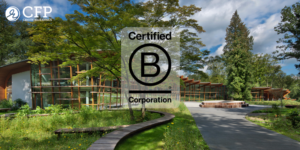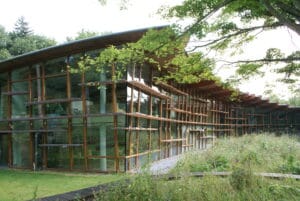

Unlocking Sustainability: A Collaboration between CFP Green Buildings and AEW
In an alliance geared towards sustainability, CFP Green Buildings joined forces with AEW to advance a data-centric approach reshaping the future of real estate. Anchored in the principles of data sharing, this collaboration delved into insights crucial for retrofitting strategies and Paris accord compliance using the CFP Green Buildings Tool and the CRREM tool.
The challenge of CRREM targets
The wide variations in estimates for current energy efficiency underscore the considerable challenges that CRREM targets pose. Hans Vrensen, Head of Research & Strategy at AEW: “We are very grateful to CFP Green buildings to provide us with data to advance our understanding of market level climate-related transition risk. Our comparison revealed a significant dispersion in kWh/m2/pa intensity across key sectors and countries across various sources. CRREM version 2.03 assumes a 2022 starting point of use at 152 kWh/m2/pa. But, this is significantly lower than the 194 kWh/m2/pa based on CFP Green Building’s estimate for a representative 500+ building portfolio sample reflecting our European market coverage. These discrepancies underscore the importance of further refining the freely available CRREM tool* and analyses with additional property-level data, a process enriched by data collaborations like this one. This task can be facilitated by CFP Green Building data on actual kWh use and energy intensity reduction costs in Euros per m2.”
*CFP is currently working on an integration of the CRREM tool into the Green Buildings Tool.
A Synchronized Journey Toward Sustainability
Empowered with AEW’s data, CFP conducted a comprehensive analysis using the Green Buildings Tool. This involved determining the current kWh per m2 per asset and the Capital Expenditure (CAPEX) required for seamless alignment with Paris accord objectives. Utilizing the CRREM tool alongside data from the Green Buildings Tool, the maximum allowable future energy use per asset class was determined in accordance with the Paris accord.

Hans Vrensen explains: “CFP’s data allowed us to confirm our in-house CRREM-based market level estimates for average transition CAPEX costs account for 56 bps of prime capital value per annum for logistics, followed by 10 bps for residential, 9 bps for offices and shopping centres, and 7 bps for high street retail.”
“Our analyses of the CFP property level data show a higher level – but similar order in regards to sectors, with logistics having the average annual costs at 78 bps, residential at 34 bps, offices at 27 bps, and high street at 20 bps. However, shopping centres, were a clear outlier showing a large unexplained discrepancy between our AEW market level and CFP’s portfolio level estimates.“
AEW further solidified the collaboration by providing a report outlining their strategic vision for leveraging the aggregated data in upcoming publications. The report can be read here.
“Collaborations like this are crucial to ready real estate for the future. By sharing data, we will gain better insights into what it will really cost to upgrade the existing build stock.”
– Catherine Luyt, Product & Account Manager at CFP Green Buildings
Key Takeaways from the collaboration
- Data Scarcity Illuminated: The collaboration shed light on the scarcity of open data concerning buildings’ energy consumption and benchmark data. The Green Buildings Tool emerged as a beacon, providing valuable insights into the anticipated energy consumption based on variables like age, location, and property type.
- Performance Evaluation: AEW, equipped with the data-driven insights, gained a nuanced understanding of existing building stock performance. This comprehensive evaluation empowered them to make informed decisions on the substantial investments required to meet the ambitious 2050 sustainability targets.
This collaborative venture stands as a testament to the power of data-driven innovation in steering the real estate industry towards a more sustainable and resilient future. It not only transforms data into actionable insights but also forges a path towards a greener and more efficient built environment.






